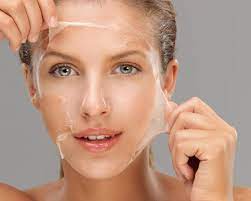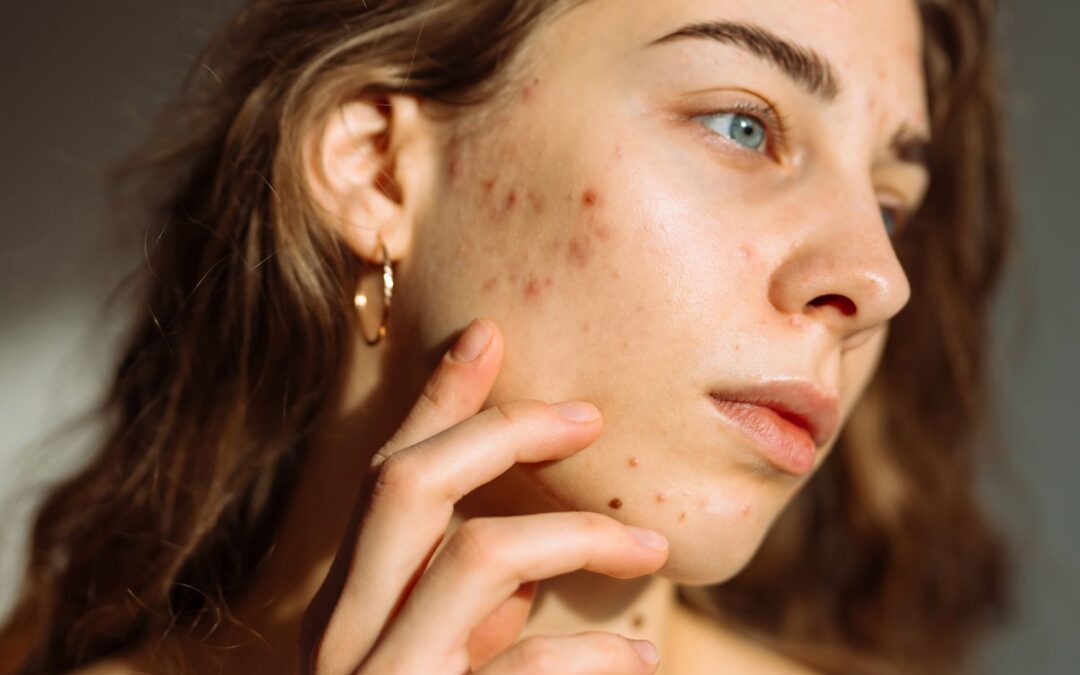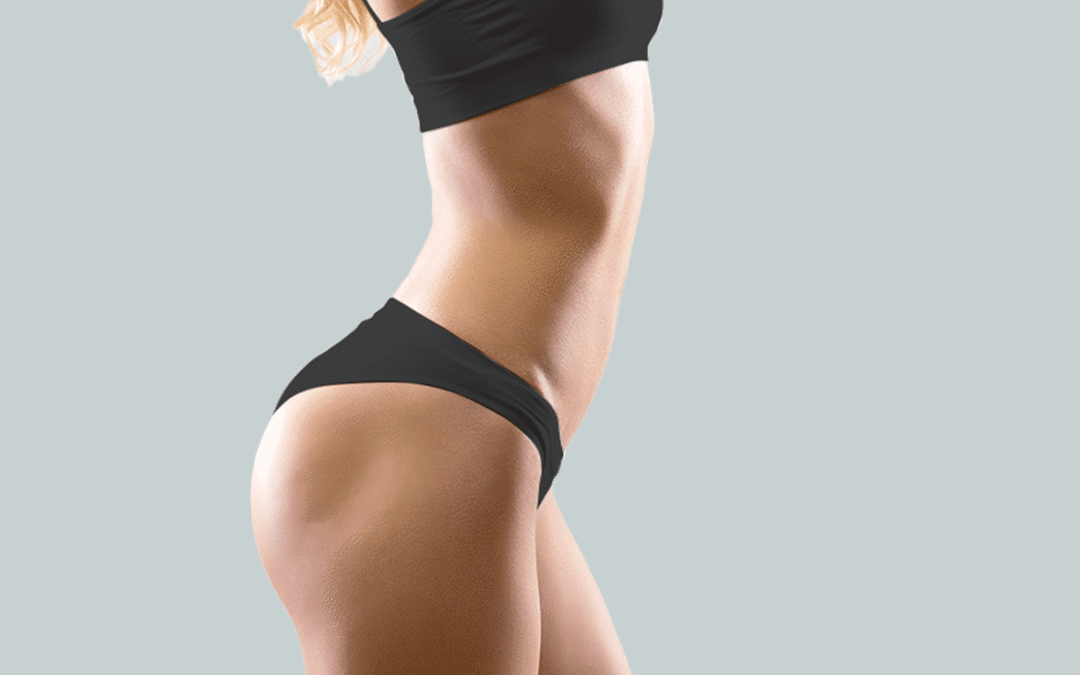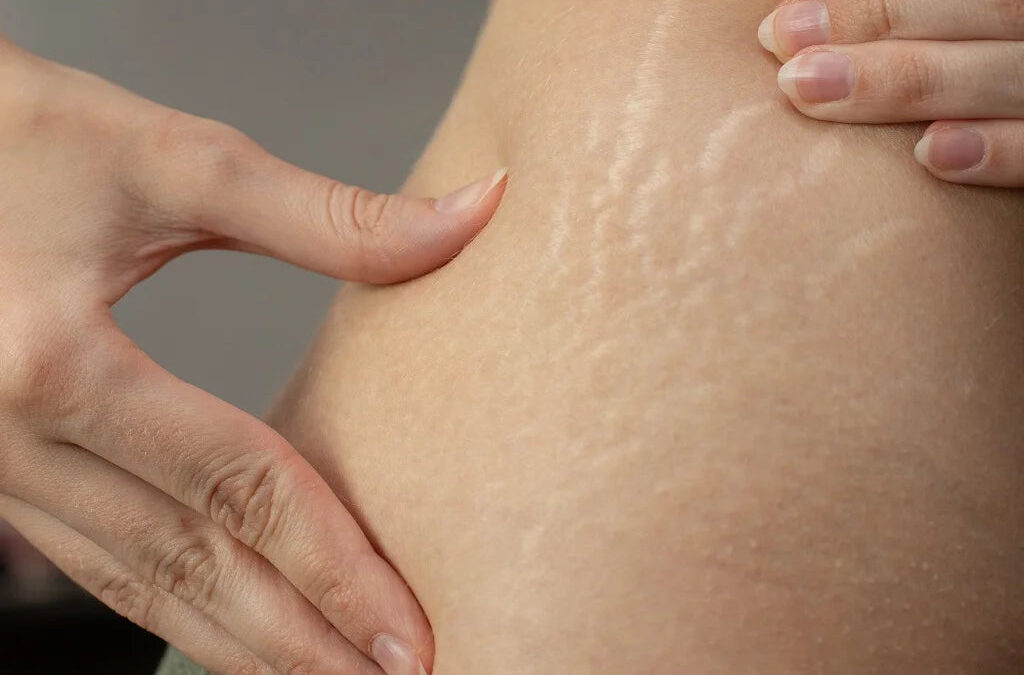
by laraibnaeem2005 | Jul 9, 2025 | Health
A common question many seek answers to is: Can chemical peels remove scars completely? Scars—whether from acne, injury, or surgery—can affect skin texture and appearance, often leading to self-consciousness. Chemical Peeling in Dubai(التقشير الكيميائي في دبي) are a popular treatment option aimed at improving skin clarity and texture by exfoliating damaged skin layers. While chemical peels are effective in reducing the visibility of scars, understanding their limitations, the importance of treatment, risks, and benefits helps set realistic expectations and guides proper skincare choices.
The Importance of Chemical Peeling in Scar Treatment:
Chemical peels play an important role in treating scars by promoting skin renewal and collagen stimulation. By removing the outer damaged layers of skin, peels reveal fresher, smoother skin underneath and encourage the body to produce new collagen fibers. This process gradually improves the texture and tone of scarred areas, making scars less noticeable over time. While chemical peels are not a magic cure for all types of scars, they are an essential part of a comprehensive skin rejuvenation strategy, especially for mild to moderate surface scars.
Risks Involved with Chemical Peeling for Scars:
Like any cosmetic treatment, chemical peels come with potential risks, especially when used for scar removal. Side effects may include redness, peeling, dryness, and temporary sensitivity. In some cases, particularly with deeper peels, there’s a risk of pigmentation changes, scarring, or prolonged irritation. The effectiveness and safety depend largely on selecting the right peel type and strength for your skin and scar type. Improper use or over-aggressive treatment can worsen skin condition or cause further damage, so caution is key.
Benefits of Chemical Peels for Scar Improvement:
Chemical Peeling(التقشير الكيميائي) provide several benefits when used to treat scars. They help exfoliate rough, uneven skin, reducing the depth and visibility of certain scars. Peels also stimulate collagen production, which is crucial for skin repair and smoothing depressed scars. Additionally, chemical peels can improve overall skin tone and clarity, addressing hyperpigmentation or discoloration often associated with scars. Regular treatments combined with good skincare can significantly enhance skin texture and reduce scar prominence, boosting confidence and skin health.
FAQs About Chemical Peels and Scar Removal:
Can chemical peels completely erase scars?
Chemical peels can improve scar appearance but usually do not remove scars entirely, especially deep or severe scars.
What types of scars respond best to chemical peels?
Superficial scars like mild acne scars or discoloration respond better than deep, raised, or keloid scars.
How many sessions are needed to see results?
Multiple sessions are often required, depending on scar severity and peel type.
Are chemical peels painful?
Most peels cause mild tingling or stinging during treatment; discomfort varies by peel strength.
What aftercare is important for scar treatment with peels?
Sun protection, gentle cleansing, and moisturizing are essential to promote healing and prevent pigmentation.
Conclusion:
So, can chemical peels remove scars completely? The answer is nuanced. While chemical peels are highly effective in improving the texture, tone, and overall appearance of many scars, they generally do not eliminate scars entirely, particularly deep or severe types. Chemical peeling remains a valuable treatment to reduce scar visibility by promoting exfoliation and collagen production. Understanding the importance of appropriate peel selection, potential risks, and realistic benefits ensures you can make informed decisions about scar management. With proper care and patience, chemical peels can help reveal smoother, more even skin and restore confidence in your complexion.

by laraibnaeem2005 | Jul 8, 2025 | Health
Wondering what’s normal after BBL—swelling, bruising, and more? After a Brazilian Butt Lift in Dubai(عملية رفع المؤخرة البرازيلية في دبي), it’s common to experience a variety of side effects as your body adjusts and heals from the procedure. Swelling, bruising, discomfort, and changes in sensation are typical parts of the recovery process. Understanding these normal responses, their importance, and what to expect can ease concerns and help you navigate your healing journey with confidence. Let’s explore what is normal after a BBL and how to manage common post-operative symptoms.
The Importance of Recognizing Normal Post-BBL Symptoms:
Recognizing what is normal after a BBL is crucial because it helps distinguish typical healing from potential complications.
Why Knowing Normal Symptoms Matters:
-
Reduces Anxiety: Understanding common side effects prevents unnecessary worry.
-
Guides Proper Care: Helps you follow appropriate recovery protocols for best results.
-
Prevents Complications: Early recognition of unusual symptoms prompts timely medical attention.
-
Supports Realistic Expectations: Awareness prepares you for the natural healing timeline.
This knowledge empowers patients to confidently manage their post-surgery recovery.
Common Post-BBL Symptoms: Swelling, Bruising, and More
Several physical changes are expected after a Brazilian Butt Lift as part of the body’s natural healing.
What’s Common After BBL:
-
Swelling: Usually peaks within the first few days and gradually subsides over weeks. It may cause the treated areas to appear larger initially.
-
Bruising: Can range from mild discoloration to more noticeable purple or yellow hues, fading in 2 to 3 weeks.
-
Discomfort and Soreness: Mild to moderate pain is typical, especially in areas where fat was harvested or injected.
-
Numbness or Tingling: Temporary altered sensation in the buttocks and donor areas can occur.
-
Tightness and Firmness: The skin may feel tight due to swelling and healing tissues.
-
Fat Irregularities: Minor lumps or unevenness may appear but often smooth out as healing progresses.
Knowing these symptoms helps you track your healing progress effectively.
Risks and When to Seek Help:
While many symptoms are normal, some signs indicate complications that require prompt attention.
Warning Signs Include:
-
Excessive or Worsening Swelling: Especially if it becomes painful or uneven.
-
Severe Pain Not Controlled by Medication: Could signal infection or other issues.
-
Redness or Warmth Around the Area: May indicate infection or inflammation.
-
Fever or Chills: Signs of systemic infection requiring urgent care.
-
Open Wounds or Discharge: Abnormal bleeding or fluid leakage should be evaluated.
Monitoring for these risks ensures safety and prevents serious problems.
Benefits of Understanding Normal Recovery:
Grasping what to expect during recovery after a Brazilian Butt Lift(رفع المؤخرة البرازيلية) offers several benefits for your healing experience.
Recovery Benefits Include:
-
Improved Comfort: Managing expectations helps reduce stress and enhances overall comfort.
-
Better Healing Outcomes: Following care advice aligned with symptom recognition supports fat survival.
-
Confidence in Progress: Knowing that swelling and bruising are typical fosters patience.
-
Enhanced Self-Care: Awareness encourages adherence to rest, nutrition, and activity guidelines.
Being informed makes the recovery phase less intimidating and more manageable.
FAQs About Normal Post-BBL Experiences:
How long does swelling last after a BBL?
Swelling usually peaks within the first week and gradually decreases over 4 to 6 weeks, sometimes longer.
Is bruising normal after a BBL?
Yes, bruising is common and can last 2 to 3 weeks, fading from dark purple to yellowish tones.
When should I expect pain to subside?
Pain typically lessens significantly after the first two weeks, but mild soreness can last longer.
Is numbness permanent?
Numbness is generally temporary and improves as nerves heal over several weeks to months.
Can lumps or firmness disappear?
Yes, minor lumps and firmness often smooth out naturally during the healing process.
Conclusion:
Understanding what’s normal after BBL—swelling, bruising, and more helps you navigate your recovery with greater ease and confidence. Swelling, bruising, discomfort, numbness, and firmness are typical reactions as your body heals and adjusts to the changes. While these symptoms can be uncomfortable, they signal progress in most cases. However, being aware of warning signs and risks ensures you can act promptly if complications arise. Embracing knowledge about normal post-operative experiences enhances your recovery, supports better outcomes, and allows you to focus on enjoying the results of your Brazilian Butt Lift.

by laraibnaeem2005 | Jul 7, 2025 | Health
When it comes to managing the appearance of scars, many wonder, do silicone sheets work on old acne scars? Silicone sheets have gained popularity as a non-invasive treatment option that promises to improve scar texture and appearance. While most commonly used for fresh wounds, their effectiveness on older Acne Scar Treatment in Dubai(علاج ندبات حب الشباب في دبي) is a question many people ask. Understanding how silicone sheets work, their benefits, potential risks, and realistic expectations can help you decide if this treatment is suitable for your scar management routine.
Importance of Treating Old Acne Scars:
Old acne scars can be stubborn and affect both appearance and confidence. Unlike fresh scars, they have already undergone the healing process, often resulting in uneven texture, discoloration, or indentations. Addressing old scars is important because:
-
It can improve skin texture and tone
-
Reduces emotional distress related to appearance
-
Enhances overall skin health by encouraging repair mechanisms
Effective treatment options can significantly boost self-esteem and improve quality of life.
How Silicone Sheets Work on Scars?
Mechanism of Action
Silicone sheets create a protective, occlusive barrier over the scar, which helps retain moisture and regulate collagen production. This controlled environment can soften and flatten raised scars, reduce redness, and improve overall scar texture. For old scars, the benefits might be more subtle, but consistent use can still promote improvement over time.
Application Guidelines
-
Cleanse the scar area before application
-
Apply the silicone sheet snugly but comfortably
-
Wear for 12 to 24 hours daily for several weeks or months
-
Replace sheets regularly to maintain hygiene and effectiveness
Consistency is key to seeing results, especially on older scars that are more resistant to change.
Risks and Considerations of Silicone Sheet Use:
While silicone sheets are generally safe, some risks and limitations include:
Skin Irritation
Prolonged occlusion may cause irritation, itching, or redness, especially on sensitive or broken skin.
Limited Effectiveness on Deep Scars
Silicone sheets work best on hypertrophic (raised) scars rather than deep, pitted scars from acne.
Need for Patience
Improvement is gradual, and visible changes can take several months, which may lead to frustration without realistic expectations.
Benefits of Silicone Sheets for Old Acne Scars:
-
Non-invasive and painless
-
Easy to use at home
-
Can reduce scar redness and thickness
-
Supports hydration and skin barrier repair
-
Cost-effective compared to some clinical Acne Scar Treatment (علاج ندبات حب الشباب)
For those hesitant about invasive procedures, silicone sheets offer a convenient alternative that may yield noticeable improvements when used diligently.
FAQs About Silicone Sheets for Acne Scars:
Q: How long should I use silicone sheets on old scars?
A: Typically, use for 8-12 weeks with daily application to notice visible improvement.
Q: Can silicone sheets completely remove old acne scars?
A: They rarely erase scars entirely but can soften and reduce their prominence.
Q: Are silicone sheets suitable for all skin types?
A: Mostly yes, but sensitive skin types should monitor for irritation.
Q: Can silicone sheets be combined with other treatments?
A: Yes, they can complement treatments like topical creams or laser therapy.
Q: Do silicone sheets work on all scar types?
A: They are most effective on raised scars, less so on deep indentations or discoloration.
Conclusion:
So, do silicone sheets work on old acne scars? The answer is yes, but with some caveats. Silicone sheets offer a safe, easy, and non-invasive way to improve the appearance of certain types of old acne scars, particularly raised and red scars. While they may not completely erase scars or be as effective on deep pitted scars, consistent and patient use can result in softer, flatter, and less noticeable scars. Considering their benefits and minimal risks, silicone sheets can be a valuable component of a comprehensive scar care routine, especially for those seeking a gentle at-home solution. For optimal results, combining them with other scar treatments and maintaining realistic expectations is essential.

by laraibnaeem2005 | Jul 7, 2025 | Health
Deciding to enhance your silhouette is exhilarating, yet one big question lingers—how often do complications occur in buttock augmentation surgery? Placing this critical keyword right here sets the tone for an honest exploration of real‑world statistics and safeguards. Although Buttock Augmentation in Dubai(تكبير المؤخرة في دبي) enjoys rising popularity worldwide, it is still a surgical procedure, and knowing the frequency of complications helps you weigh benefits against possible setbacks, prepare mentally for recovery, and select best‑practice techniques that minimize risk.
The Importance of Tracking Complication Rates:
H3: Why Numbers Matter to Patients
-
Evidence‑Based Choice – Reliable data show overall complication rates range from 10 % to 24 % depending on technique, surgeon experience, and patient health.
-
Informed Consent – Understanding percentages for infection (2–5 %), seroma (1–6 %), and fat necrosis (5–15 %) ensures realistic expectations.
-
Motivation for Aftercare – Knowing complications spike when compression garments are ignored or smoking continues inspires strict compliance.
By interpreting these figures before Buttock Augmentation(تكبير المؤخرة), you enter the operating room with clarity, not guesswork.
Potential Risks and Their Frequencies:
Breaking Down the Numbers
Benefits & Modern Safety Improvements:
H3: How Advances Tip the Balance in Your Favor
-
Refined Implant Shells – Cohesive gel and textured surfaces decrease rupture and rotation, dropping mechanical failure rates below 1 % per year.
-
Intramuscular Fat Layering – Micro‑droplet injections in well‑vascularized muscle reduce fat embolism risk to under 0.05 %.
-
Enhanced Recovery Protocols – Same‑day ambulation, anti‑microbial washes, and targeted lymphatic massage trim infection and seroma incidence by nearly half.
-
Compression & Positioning Tools – Ergonomic cushions and graduated garments keep pressure off grafts, lowering shift‑related asymmetry.
These innovations don’t erase risk, but they dramatically improve success rates and long‑term satisfaction.
Frequently Asked Questions:
How soon will I know if I have a complication?
Minor swelling is normal, but persistent redness, fever, or one‑sided pain within two weeks warrants medical review.
Does BMI affect complication rates?
Yes; patients with BMI >30 face higher infection and anesthesia risks—discuss weight‑management plans pre‑op.
Can fat embolism occur months later?
No; this is an immediate post‑injection event. Following surgeon‑approved layering techniques minimizes likelihood.
Are implants safer than fat transfer?
They each carry distinct profiles: implants pose capsular contracture risk, while fat transfer faces resorption and lumpiness. Complication percentages overlap; personal anatomy and lifestyle guide best choice.
How often do revisions happen?
Roughly 10–15 % of patients seek some revision within five years, most commonly for symmetry adjustments or size changes rather than medical emergencies.
Is non‑surgical correction possible?
Mild contour irregularities respond to radiofrequency tightening or ultrasound‑assisted lipolysis; major issues still require surgical intervention.
Conclusion:
So, how often do complications occur in buttock augmentation surgery? While overall rates hover between 10 % and 24 %, serious events remain low thanks to modern techniques, vigilant aftercare, and patient education. Armed with these statistics, you can enter the journey confidently—prioritizing board‑certified expertise, following every recovery guideline, and scheduling periodic imaging. Awareness, not anxiety, is the key to transforming risk numbers into actionable steps that safeguard both your health and your future curves.

by laraibnaeem2005 | Jul 2, 2025 | Health
Stretch marks from weightlifting are a common concern among fitness enthusiasts, especially those who experience rapid muscle gain. These marks often appear as thin, streaky lines on the shoulders, arms, chest, or thighs—areas where the skin is stretched quickly due to muscle expansion. A frequent question that arises is: Can I remove stretch marks from weightlifting? While complete Stretch Marks Removal in Dubai(علاج إزالة علامات التمدد في دبي) is rarely possible, there are several effective ways to reduce their appearance and improve overall skin texture with the right care and consistency.
Why Stretch Marks Appear After Weightlifting?
Stretch marks, medically known as striae, develop when the skin is stretched beyond its natural elasticity. In the case of weightlifting, quick bulking or hypertrophy can lead to microtears in the dermis layer of the skin, especially in genetically susceptible individuals. These marks typically start out red, purple, or dark brown depending on skin tone and fade to white or silver over time.
Contributing Factors:
-
Rapid muscle growth without gradual progression
-
Genetic predisposition to low skin elasticity
-
Lack of proper skin hydration and nourishment
-
Inadequate recovery between intense training cycles
-
Hormonal shifts that affect collagen production
Understanding the cause helps guide the right treatment plan for improving skin resilience and fading stretch marks effectively.
Best Ways to Treat Weightlifting Stretch Marks:
While stretch marks from weightlifting are not harmful, many seek ways to improve their appearance. Several non-invasive and accessible treatments can stimulate collagen, fade discoloration, and smooth the skin’s surface.
Proven Treatment Options Include:
-
Microneedling Tools
Encourage collagen production and skin remodeling through tiny punctures that trigger healing.
-
Hyaluronic Acid Serums
Deliver deep hydration, plumping the skin and reducing the visibility of fine lines.
-
Retinol or Retinoid Creams
Speed up cell turnover and help fade newer marks over time (not suitable for everyone).
-
Natural Oils and Body Butters
Ingredients like rosehip oil, shea butter, and vitamin E help nourish and support elasticity.
-
Chemical Exfoliation (e.g., glycolic acid)
Promotes skin renewal and can help even out tone and texture over several weeks.
The earlier you start treatment—especially when stretch marks are still red or purple—the better the results are likely to be.
What Are the Risks of Treating These Stretch Marks?
Although most treatments are safe, some may carry risks if used improperly or on sensitive skin. Overuse of actives, skipping hydration, or aggressive exfoliation can worsen irritation rather than improve the skin’s condition.
Risks to Watch For:
-
Skin sensitivity or peeling from strong ingredients
-
Allergic reactions to natural or scented products
-
Over-exfoliation leading to dryness or flaking
-
Sun sensitivity when using retinoids or acids
-
Infection risk if microneedling is done with unclean tools
Always follow instructions, avoid overuse, and patch test before applying new products to large areas of skin.
Benefits of Treating Weightlifting-Related Stretch Marks:
Stretch Marks Removal Treatments(علاج إزالة علامات التمدد) not only improves the visual appearance of the skin but also enhances its health and resilience. With consistent care, skin tone becomes more even, and the texture improves noticeably, even if the marks don’t vanish completely.
Main Benefits:
-
Smoother, more supple skin
-
Faded discoloration and improved uniformity
-
Boosted collagen for long-term skin strength
-
Increased confidence when wearing sleeveless or tight clothing
-
Healthier skin barrier through regular hydration and nourishment
Visible improvement can be achieved with consistent application over weeks or months, depending on the severity of the stretch marks.
Frequently Asked Questions:
Are weightlifting stretch marks permanent?
They may not disappear completely, but they can fade significantly with treatment.
How long does it take to see results?
Improvements are usually seen in 8 to 12 weeks of consistent care.
Is it safe to use retinol for stretch marks?
Yes, but only if you are not overly sensitive and not exposed to excessive sun.
Do protein supplements cause stretch marks?
Not directly—they support muscle growth, which can indirectly contribute if skin stretches too fast.
Can I prevent new stretch marks while lifting?
Yes, by gradually increasing muscle mass, staying hydrated, and moisturizing regularly.
Conclusion:
So, can I remove stretch marks from weightlifting? While complete removal is rare, you can dramatically reduce their appearance with targeted, consistent care. Treatments like microneedling, hyaluronic acid, retinoids, and nourishing oils help restore skin elasticity and fade discoloration over time. With patience and the right regimen, these stretch marks can become a subtle reminder of progress—rather than a source of concern—allowing you to focus on your fitness goals with greater confidence.





